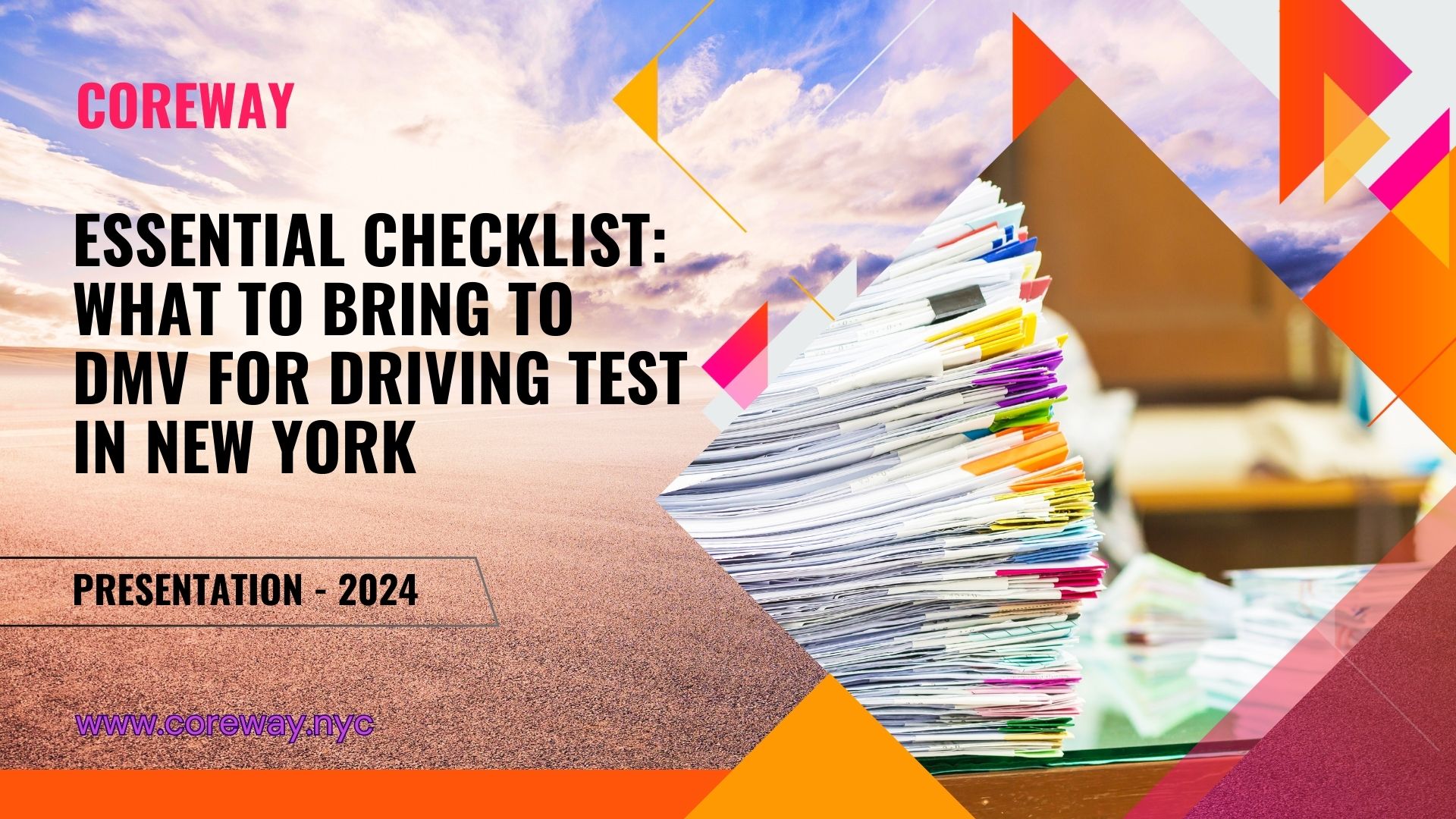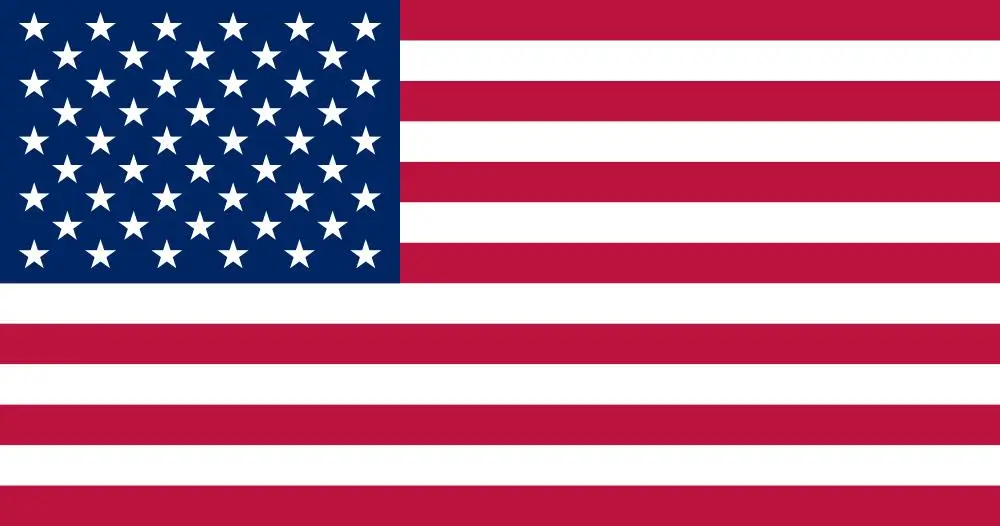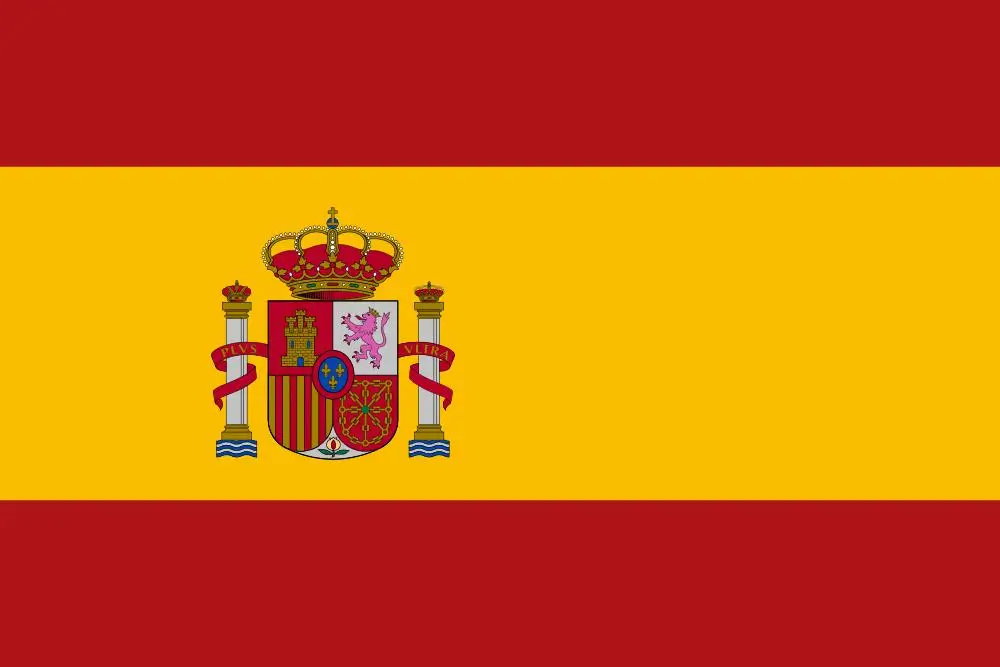Essential Checklist: What to Bring to DMV for Driving Test in New York

Table of Contents
- Required Documents for the Driving Test
- Vehicle Requirements for the Road Test
- Vehicle Requirements for the Road Test
- Personal Items to Bring on Test Day
- Common Mistakes to Avoid When Preparing for Your NY Driving Test
- What to Expect During the Test
- Tips for Success on Your NY DMV Road Test
- Ready, Set, Drive: Your Path to DMV Test Success in New York
New York has specific requirements for road tests, including necessary documents, vehicle conditions, and personal items. Understanding these requirements is essential for a smooth testing experience.
New York State mandates that you must be at least 16 years old and pass the road test to get your driver's license. The only exception is if you already hold a valid license from another state.
To ensure a smooth testing experience, arrive at least 30 minutes early on the day of your road test. Here's a quick rundown of what you need to bring for your driving test:
- A valid NYC learner's permit
- Original Pre-licensing course certificate or Driver Education Completion certificate
- Certificate of Supervised Driving (if under 18)
- Corrective lenses (if required by your permit)
- A licensed driver aged 21 or older
- A clean, properly functioning vehicle with valid registration and inspection
Discover the best options for a reliable car for driving test in Brooklyn to help you pass the first time.
But there's more to consider for a successful test day. This guide will delve into the details of each requirement, provide tips to avoid common pitfalls, and help you feel confident and prepared.
Call Us Today 6AM-10PM
Or fill out the form 24/7
Our team is here to guide you with promotions, instructor availability, and the best training package for you.
Required Documents for the Driving Test
When you arrive at the DMV for your road test, you'll need to present several important documents.
| Category | Items to Bring |
| Documents | - Valid NYC learner permit - Proof of identity - Proof of NY residency - Pre-licensing Course Certificate (MV-278) or Student Certificate of Completion (MV-285) - Certification of Supervised Driving (MV-262) if under 18 |
| Vehicle-related | - Registered and insured vehicle - Proof of valid inspection - Working lights, brakes, and signals |
| Personal Items | - Glasses or contacts (if required) - Comfortable clothing and shoes - Payment for test fees |
| Accompanying Person | - Licensed driver age 21 or older |
Make sure you have the following items ready:
Learner's permit
- Valid NYC learner permit: This is the most crucial document you need. Ensure your permit is current and hasn't expired.
- Photo learner permit: Your permit should have your photograph on it. If you have a temporary permit without a photo, you'll need to bring additional identification.
Proof of identity
- Proof of identity with date of birth: Bring an original, unexpired document that proves your identity, such as a passport or birth certificate.
- DMV ID Number: You'll find this number above your photo on your learner's permit.
Proof of New York residency
- Proof of New York residence: Bring a document that shows your current address, such as a utility bill or bank statement.
Pre-licensing course completion certificate
- Pre-licensing Course Certificate (MV-278) or Student Certificate of Completion (MV-285): This proves you've completed the required driver education course.
- Unexpired certificates: Ensure your certificate hasn't expired. They're typically valid for one year from the date of completion.
Supervised driving log
- Certification of Supervised Driving (MV-262): If you're under 18, you must provide this form signed by your parent or guardian, certifying that you've completed at least 50 hours of supervised driving practice.
Remember, all documents must be original – no copies are accepted. Double-check that you have everything before leaving for your test to avoid any last-minute panic.
Vehicle Requirements for the Road Test
Now that we've covered the personal documents, let's talk about the vehicle you'll use for your test. Whether you're using your own car, borrowing one, or using a driving school vehicle, it must meet specific requirements:
Valid registration and inspection
- Registered vehicle: The car must have valid, up-to-date registration.
- Vehicle with valid inspection: Ensure the vehicle has passed its most recent New York inspection.
Proof of insurance
- Insured vehicle: Bring proof of current insurance for the vehicle you'll be using during the test.
Properly functioning vehicle components
Your test vehicle must be in good working condition. Here are some key areas to check:
- Lights and signals
- Working signal lights
- Functional headlights, brake lights, and turn signals
- Brakes and emergency brake
- Properly functioning foot brake
- Working emergency brake
- Mirrors and windshield
- Clean, unobstructed windshield
- Functional windshield wipers
- Properly adjusted rear view mirrors and side mirrors
Other important vehicle components to check include:
- Horn
- Seat belts
- Proper tire condition
- Functional front passenger door
Special considerations for borrowed or rental vehicles
If you're not using your own vehicle, make sure you have permission to use the car for your road test. For rental vehicles, bring the rental agreement and ensure it allows for use in a driving test.
Vehicle Requirements for the Road Test

When it comes to your New York DMV driving test, the vehicle you use is just as important as the documents you bring. Whether you're using your own car, borrowing one from a friend or family member, or using a driving school vehicle, it must meet specific requirements to be considered road test-ready.
Learn the unique challenges of different road test sites in Brooklyn from our certified instructors.
Call Us Today 6AM-10PM
Or fill out the form 24/7
Our team is here to guide you with promotions, instructor availability, and the best training package for you.
Ensuring Valid Registration and Inspection
First and foremost, your test vehicle must have valid, up-to-date registration. This proves that the car is legally allowed to be on the road. Additionally, make sure the vehicle has passed its most recent New York inspection. The inspection sticker should be clearly visible on the windshield and not expired.
Proof of Insurance is a Must
Don't forget to bring proof of current insurance for the vehicle you'll be using during the test. This is typically in the form of an insurance card or policy document. Ensure that the insurance hasn't lapsed and covers the date of your road test.
Key Vehicle Components to Check
Your test vehicle must be in good working condition. Here are some crucial areas to inspect before your test:
Lights and Signals
- All signal lights should be functioning properly
- Check headlights, brake lights, and turn signals to ensure they're working correctly
Brakes and Emergency Brake
- The foot brake should be responsive and in good condition
- Test the emergency brake to make sure it engages and disengages smoothly
Mirrors and Windshield
- The windshield should be clean and free from any major cracks or obstructions
- Windshield wipers need to be in good working order
- Adjust all mirrors (rear view and side mirrors) for proper visibility
Other Important Components
- Horn: Should be loud and clear when activated
- Seat belts: All must be functional and easily accessible
- Tires: Check for proper inflation and good tread condition
- Front passenger door: Must open and close properly from both inside and outside
Cleanliness and Condition
While not strictly required, bringing a clean vehicle in good operating condition can make a positive impression on your examiner. Remove any unnecessary items or clutter from the vehicle, especially from the front passenger area where the examiner will be sitting.
Special Considerations for Borrowed or Rental Vehicles
If you're not using your own vehicle for the test, there are a few extra things to keep in mind:
- For borrowed vehicles, ensure you have explicit permission to use the car for your road test
- If using a rental car, bring the rental agreement and double-check that it allows for use in a driving test
- Familiarize yourself with the vehicle's controls before the test day if it's not the car you usually practice in
Remember, a properly functioning vehicle not only ensures a smooth test experience but also demonstrates your commitment to safety and responsibility as a future licensed driver. Take the time to thoroughly check your vehicle before heading to the DMV, and you'll be one step closer to passing your New York driving test with flying colors!
Personal Items to Bring on Test Day
Preparing for your driving test isn't just about documents and vehicles. There are several personal items you should bring to ensure you're comfortable and ready for success. Let's go through what you need to remember:
Dress for Success and Comfort
While there's no strict dress code for your driving test, it's important to wear comfortable clothing that allows for easy movement:
- Comfortable shoes: Choose shoes that provide good control over the pedals. Avoid flip-flops, high heels, or any footwear that could slip off easily.
- Weather-appropriate clothing: New York weather can be unpredictable, so dress in layers if necessary.
Vision Aids
If you require corrective lenses, don't forget to bring them:
- Glasses or contact lenses: If your learner's permit indicates you need corrective lenses, you must wear them during the test.
- Spare pair of glasses: It's always a good idea to bring a backup, just in case.
Payment for Test Fees
Be prepared to pay any necessary fees:
- Payment method: Check with your local DMV to see what forms of payment they accept (cash, credit card, check).
- Exact amount: Having the exact fee amount can save time and hassle.
Additional Items to Consider
While not required, these items can make your test day go more smoothly:
- Water bottle: Stay hydrated, especially if you're feeling nervous.
- Small snack: In case of delays, a light snack can help keep your energy up.
- Hair tie: If you have long hair, you might want to tie it back for better visibility.
Common Mistakes to Avoid When Preparing for Your NY Driving Test
Even with the best preparation, it's easy to overlook some details.
| Common Mistake | How to Avoid It |
| Forgetting essential documents | Double-check document checklist before leaving home |
| Overlooking vehicle maintenance | Conduct thorough vehicle inspection well before test day |
| Arriving late or unprepared | Plan route to DMV, aim to arrive 15-30 minutes early |
| Insufficient practice | Schedule regular practice sessions in various driving conditions |
| Neglecting to study road rules | Review driver's manual and take online practice tests |
Here are some common pitfalls to watch out for:
Forgetting Essential Documents
This is perhaps the most crucial mistake to avoid:
- Double-check your document checklist: Go through the list of required documents multiple times before leaving home.
- Organize your papers: Keep all your documents in a folder to prevent misplacing anything.
Overlooking Vehicle Maintenance
Don't assume your vehicle is ready without checking:
- Conduct a thorough vehicle inspection: Check all lights, signals, brakes, and other components well before your test day.
- Address any issues promptly: If you notice any problems, get them fixed immediately.
Arriving Late or Unprepared
Poor timing can derail your test before it even begins:
- Plan your route to the DMV: Know exactly how to get there and how long it will take.
- Arrive early: Aim to get to the DMV at least 15-30 minutes before your scheduled time.
- Get enough rest: Ensure you're well-rested and alert for your test.
What to Expect During the Test
Understanding what lies ahead can help calm your nerves and boost your confidence. Let's break down what you can expect during the test.
Test Components and Scoring
The New York road test evaluates your ability to operate a vehicle safely and follow traffic laws. Here's what you'll be tested on:
- Basic vehicle control: Starting, stopping, turning, and backing up
- Traffic signs and signals: Recognizing and obeying all road signs and traffic signals
- Lane usage: Proper lane selection and changing lanes safely
- Speed control: Maintaining appropriate speeds in various conditions
- Turning and intersections: Executing proper turns and navigating intersections correctly
- Parking: Demonstrating parallel parking skills
Your examiner will use a scoring system where you start with 100 points. Points are deducted for errors, and you need to maintain a score of 70 or above to pass.
Duration and Route
- Time: The average road test takes about 15-20 minutes.
- Location: Tests typically occur in areas surrounding the DMV office, including residential streets and possibly highways.
- Route: While the exact route isn't disclosed beforehand, it will include a variety of driving scenarios to test your skills comprehensively.
Post-Test Procedures
After completing your driving test, here's what happens next:
- Immediate feedback: Your examiner will inform you whether you've passed or failed right after the test.
- Paperwork: If you pass, you'll receive temporary driving privileges.
- Next steps: The examiner will explain how to obtain your official license or, if you didn't pass, how to schedule another test.
Tips for Success on Your NY DMV Road Test

To increase your chances of passing on the first try, consider these helpful tips:
Practice in the Test Area
- Familiarize yourself: If possible, practice driving in the area around the DMV where you'll be taking your test.
- Master local challenges: Pay attention to any unique road features or traffic patterns in the area.
Review Traffic Laws and Road Signs
- Study the driver's manual: Refresh your knowledge of New York traffic laws and road signs.
- Take practice tests: Online practice tests can help reinforce your understanding of road rules.
Get a Good Night's Sleep Before the Test
- Rest well: Aim for at least 8 hours of sleep the night before your test.
- Avoid last-minute cramming: Relax and trust in your preparation.
Stay Calm and Focused
- Deep breaths: If you feel nervous, take a few deep breaths to calm yourself.
- Positive self-talk: Remind yourself that you've prepared well and are ready for this challenge.
Listen Carefully to the Examiner
- Follow instructions: Pay close attention to the examiner's directions and follow them precisely.
- Ask for clarification: If you're unsure about an instruction, don't hesitate to ask for clarification.
Ready, Set, Drive: Your Path to DMV Test Success in New York
Recap of Essential Items to Bring
As we wrap up this comprehensive guide, let's quickly recap the essential items you need to bring to your New York DMV driving test:
- Valid NYC learner permit with your photo
- Proof of identity and New York State residency
- Pre-licensing Course Certificate (MV-278) or Student Certificate of Completion (MV-285)
- Certification of Supervised Driving (MV-262) if you're under 18
- A registered, insured, and inspected vehicle in good operating condition
- Glasses or contacts, if required for driving
- Payment for test fees
- A licensed driver age 21 or older to accompany you
Remember, all documents must be original – no copies are accepted!
Importance of Thorough Preparation
Proper preparation is the key to success in your driving test. By ensuring you have all the necessary items and understanding what to expect, you're setting yourself up for a positive experience. Here's why thorough preparation matters:
- Reduces stress: Knowing you have everything you need allows you to focus on your driving skills.
- Demonstrates responsibility: Being well-prepared shows the examiner that you take driving seriously.
- Increases confidence: Familiarity with the process and requirements boosts your self-assurance.
- Saves time: Having all your documents ready prevents delays or rescheduling.
Remember, obtaining your driver's license is not just about passing a test – it's about becoming a safe, responsible driver. The preparation you put in now will serve you well throughout your driving career. Stay calm, drive safely, and show the examiner your best driving skills. Good luck on your test!
Call Us Today 6AM-10PM
Or fill out the form 24/7
Our team is here to guide you with promotions, instructor availability, and the best training package for you.
FAQs
-
Can I use a GPS during the test?
No, GPS devices are not allowed during the driving test. Your examiner will provide all necessary directions.
-
What happens if I fail the test?
If you don't pass, don't worry – it's not uncommon. You'll receive feedback on areas for improvement and can schedule another test after a waiting period, typically 7 days.
-
How long is the waiting period to retake the test?
Generally, you must wait at least 7 days before you can retake the road test. Use this time to practice and improve on any areas where you struggled.
-
Are there any additional requirements for new drivers under 18?
Yes, drivers under 18 must hold their learner's permit for at least 6 months and complete 50 hours of supervised driving (including 15 hours at night) before taking the road test.
-
Can I take the road test in an automatic transmission vehicle?
Yes, you can take the test in an automatic vehicle. However, if you pass in an automatic, your license will be restricted to automatic transmission vehicles only. To drive manual transmission vehicles, you'll need to pass the test in a manual car.
 English
English Spanish
Spanish 

